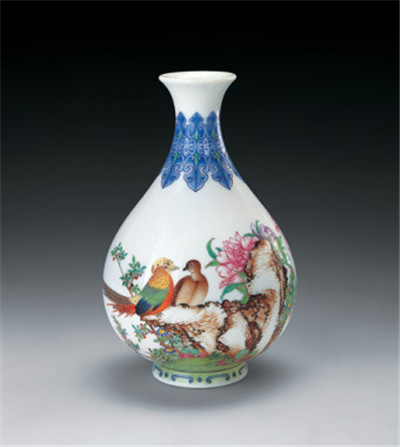 |
|
Painted enamel Chinese peony and pheasant design pear-shaped vase from the Qing Dynasty (1644-1911). [Photo provided to China Daily] |
So, the setting up of Tianjin Museum was no surprise. In its early years, between 1918 and 1937, the museum was open to the public on a regular basis, and periodically granted free entry without tickets.
Tianjin Museum was also the first one in China to have a museum council-comprising government officials and members from civil society-to run the institution.
A major part of the funding for the museum in the early days came from the government, while the remainder was mobilized from the public.
Separately, the curator says, the museum was the first one to publish books by China's top oracle researcher Wang Xiang (1876-1965).
At one point, in the 1920s, when Tianjin was administrated by Hebei province, the museum was called Hebei Museum, and published a half-monthly journal which covered global history.